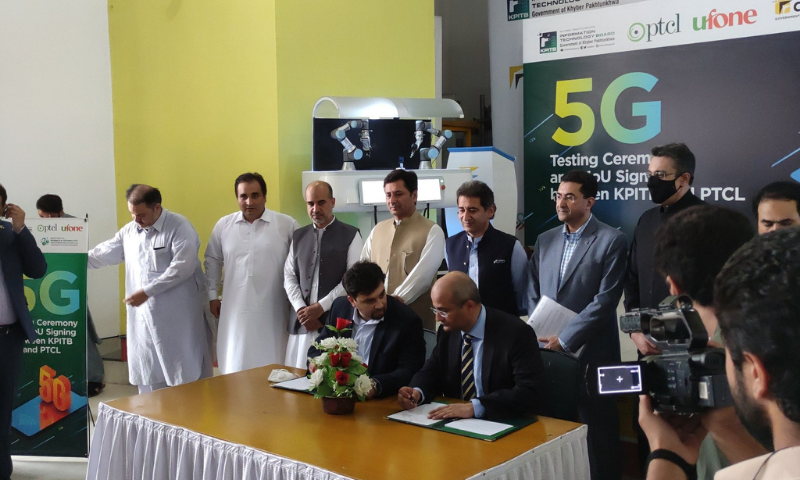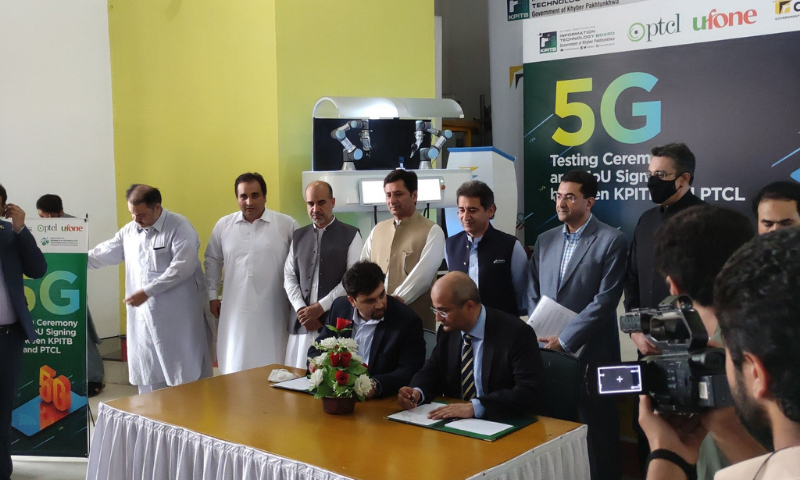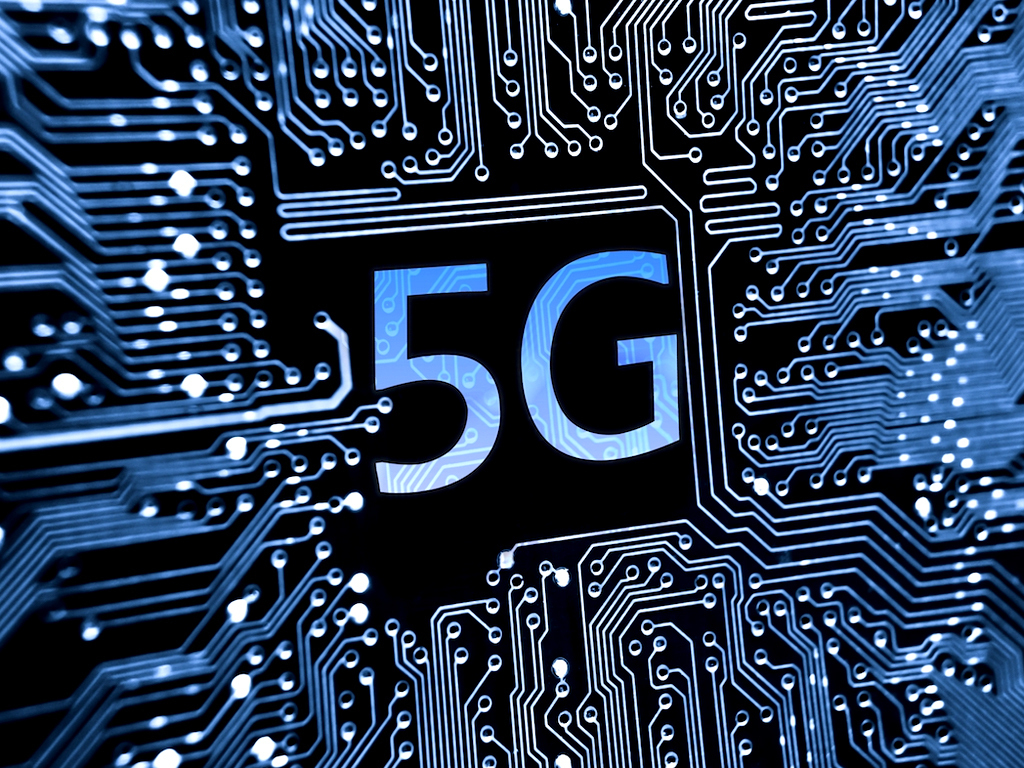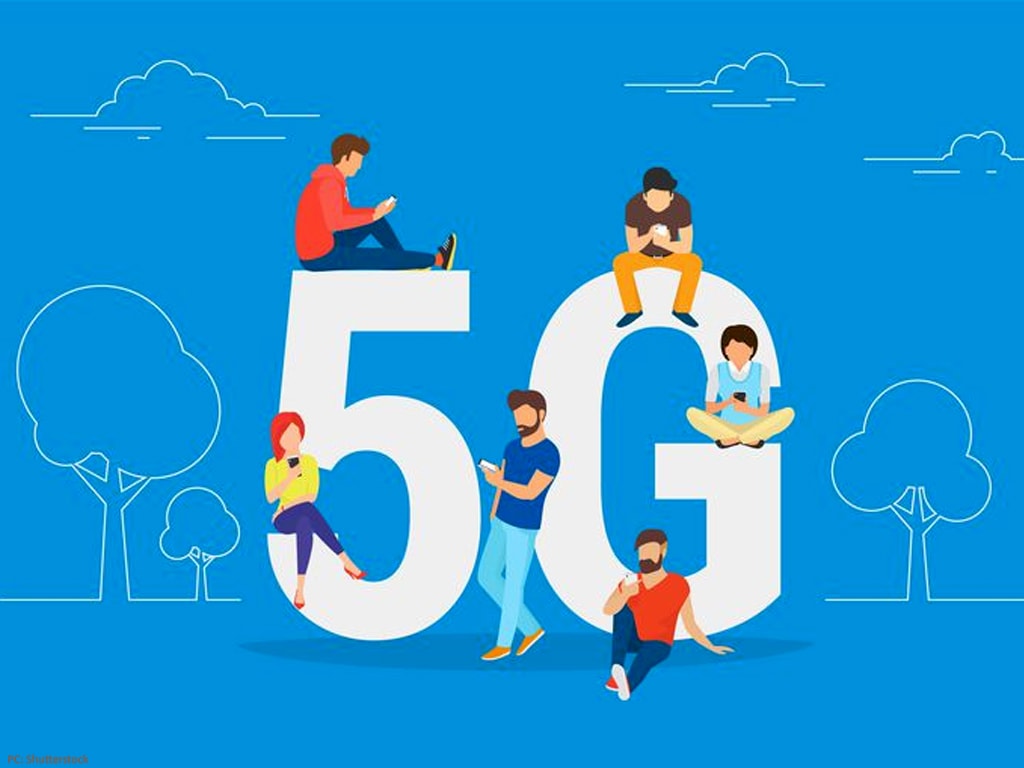ghazi52
PDF THINK TANK: ANALYST

- Joined
- Mar 21, 2007
- Messages
- 101,794
- Reaction score
- 106
- Country
- Location
Successful 5G trial held in Peshawar in 'limited environment'
Sirajuddin
June 17, 2021

Officials of the Khyber Pakhtunkhwa Information Technology Board (KPITB) and the Pakistan Telecommunication Company Ltd (PTCL) sign a memorandum of understanding (MoU) to conduct 5G trials in Peshawar. — Photo courtesy KPITB Twitter
A successful 5G technology trial was held at the Durshal Incubation Centre in Peshawar on Thursday "in a limited environment on a non-commercial basis" as part of a collaboration between the Khyber Pakhtunkhwa Information Technology Board (KPITB) and the Pakistan Telecommunication Company Ltd (PTCL), the PTCL said in a statement.
The KPITB and PTCL also signed a memorandum of understanding (MoU) to conduct 5G trials in Peshawar.
"The demonstrations included successful remote surgery concept, cloud gaming and an overview of anticipated 5G technology applications in Pakistan. Once the infrastructure and systems are operational, surgeons will be able to perform surgeries remotely in the far-flung areas," the statement said.
Minister for Information Technology and Food Atif Khan, who was present at the trial, said KP was the "first province in the country where trial of 5G services had been started", the KPITB said in a separate statement.
Talking to reporters, Khan said the speed of 5G internet would be 10 times faster than 4G. Regarding its applications, he said that it could be used to operate artificial arms. "A doctor in Chitral can perform an operation in Peshawar. There are lots of benefits with respect to films and games as well."
The minister said that in the past, people progressed when a road was built in an area but now they would progress when 5G technology was available.
He said the negative perception surrounding 5G technology was "wrong", noting that there was no research that pointed to "negative issues" of 5G internet.
He added that the provincial government was increasing the budget of the IT department from Rs430 million to Rs12-14 billion. "The provincial government gives a lot of importance to science and information technology and several megaprojects of the IT sector have been included in the upcoming year's development budget which would not only result in easier [facilitation of] services to people but also end corruption."
Talking about initiatives the government would take, Khan said citizen facilitation centres would be built, the IT sector would be promoted, a 40-Kanal digital complex would be constructed in Peshawar along with an IT park in Abbottabad, a special technology zone in Mardan and an IT park in Swat.
He added that internet had been provided to 25 colleges in KP and efforts were being made to provide internet to other colleges and universities as well.
In February of this year, PTCL conducted tests of 5G technology at its headquarters in Islamabad to achieve download speeds reaching 1.685 gigabytes per second (GBPS).

Sirajuddin
June 17, 2021

Officials of the Khyber Pakhtunkhwa Information Technology Board (KPITB) and the Pakistan Telecommunication Company Ltd (PTCL) sign a memorandum of understanding (MoU) to conduct 5G trials in Peshawar. — Photo courtesy KPITB Twitter
A successful 5G technology trial was held at the Durshal Incubation Centre in Peshawar on Thursday "in a limited environment on a non-commercial basis" as part of a collaboration between the Khyber Pakhtunkhwa Information Technology Board (KPITB) and the Pakistan Telecommunication Company Ltd (PTCL), the PTCL said in a statement.
The KPITB and PTCL also signed a memorandum of understanding (MoU) to conduct 5G trials in Peshawar.
"The demonstrations included successful remote surgery concept, cloud gaming and an overview of anticipated 5G technology applications in Pakistan. Once the infrastructure and systems are operational, surgeons will be able to perform surgeries remotely in the far-flung areas," the statement said.
Minister for Information Technology and Food Atif Khan, who was present at the trial, said KP was the "first province in the country where trial of 5G services had been started", the KPITB said in a separate statement.
Talking to reporters, Khan said the speed of 5G internet would be 10 times faster than 4G. Regarding its applications, he said that it could be used to operate artificial arms. "A doctor in Chitral can perform an operation in Peshawar. There are lots of benefits with respect to films and games as well."
The minister said that in the past, people progressed when a road was built in an area but now they would progress when 5G technology was available.
He said the negative perception surrounding 5G technology was "wrong", noting that there was no research that pointed to "negative issues" of 5G internet.
He added that the provincial government was increasing the budget of the IT department from Rs430 million to Rs12-14 billion. "The provincial government gives a lot of importance to science and information technology and several megaprojects of the IT sector have been included in the upcoming year's development budget which would not only result in easier [facilitation of] services to people but also end corruption."
Talking about initiatives the government would take, Khan said citizen facilitation centres would be built, the IT sector would be promoted, a 40-Kanal digital complex would be constructed in Peshawar along with an IT park in Abbottabad, a special technology zone in Mardan and an IT park in Swat.
He added that internet had been provided to 25 colleges in KP and efforts were being made to provide internet to other colleges and universities as well.
In February of this year, PTCL conducted tests of 5G technology at its headquarters in Islamabad to achieve download speeds reaching 1.685 gigabytes per second (GBPS).

Successful 5G trial held in Peshawar in 'limited environment'
KP IT minister says negative perception around 5G is "wrong", speed of 5G will be 10 times faster than 4G.
www.dawn.com




